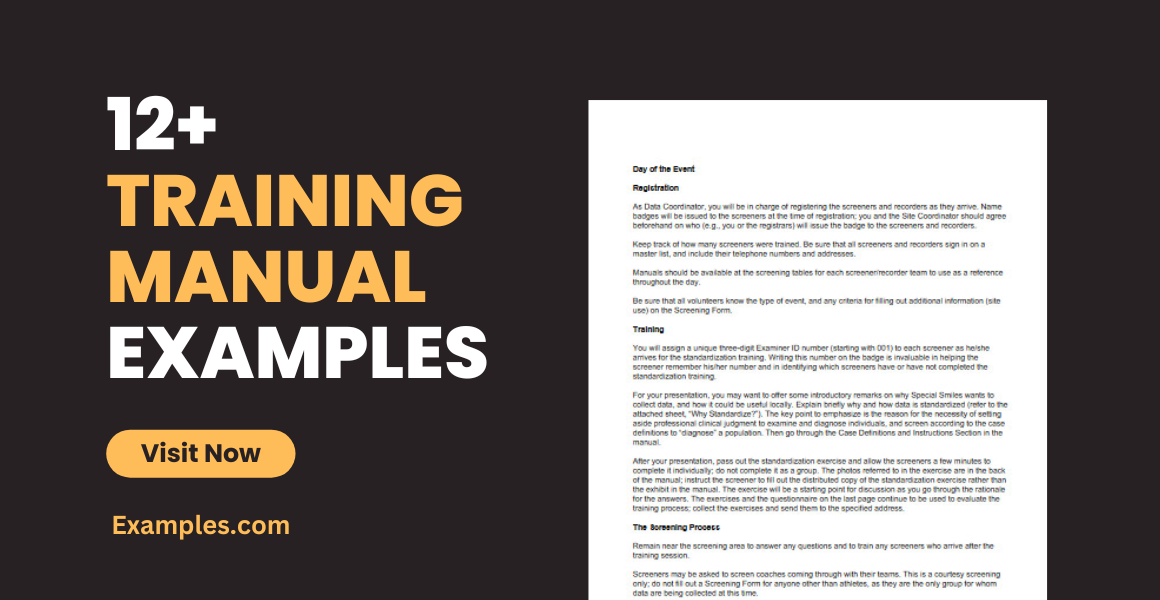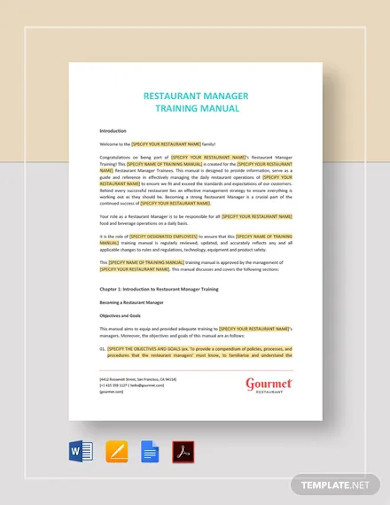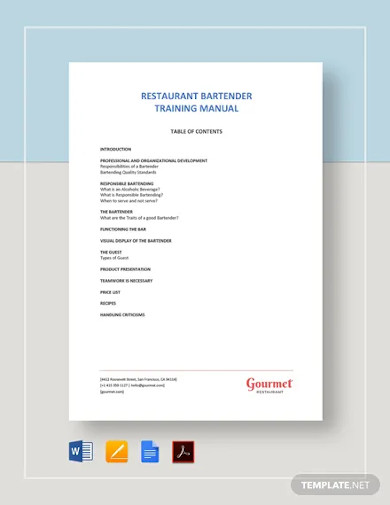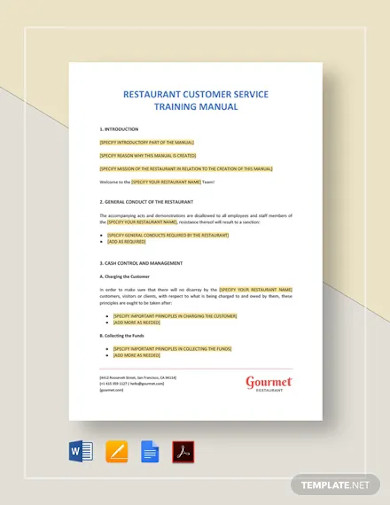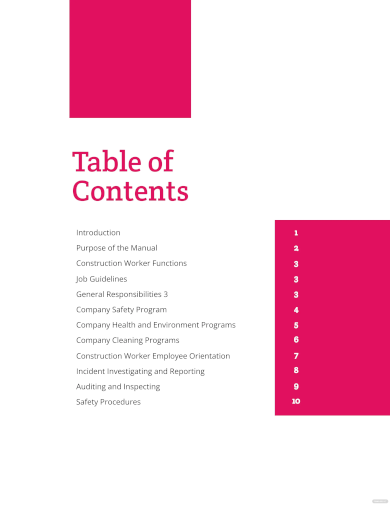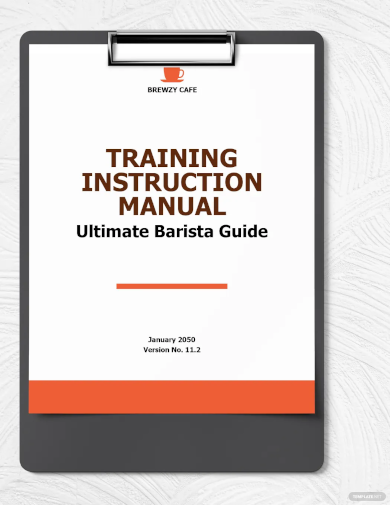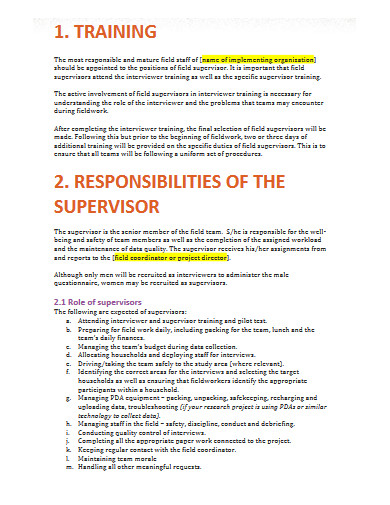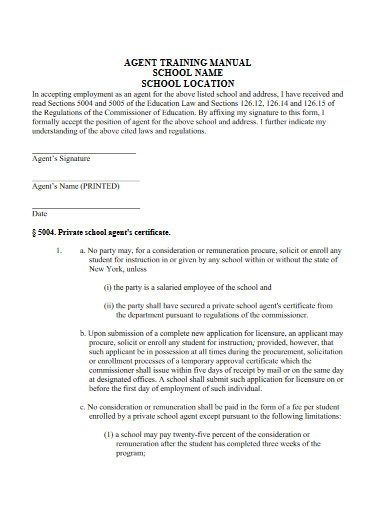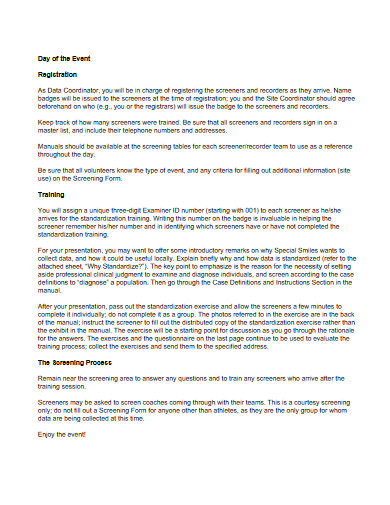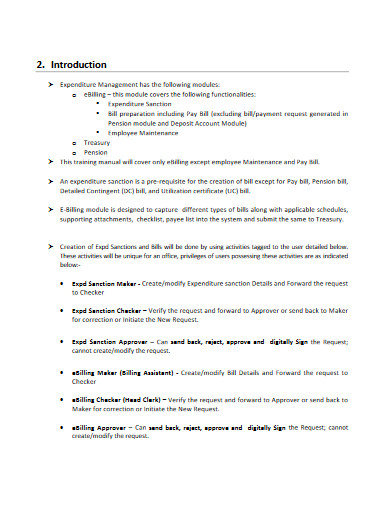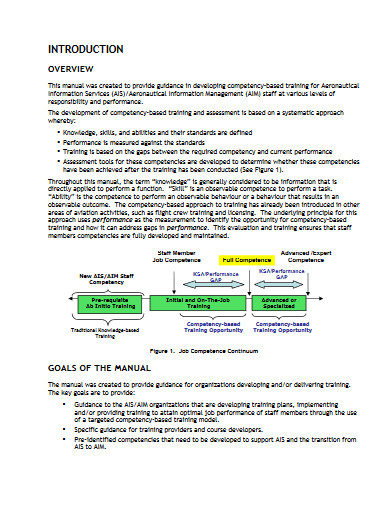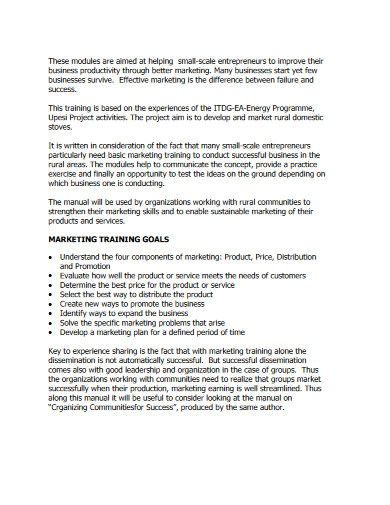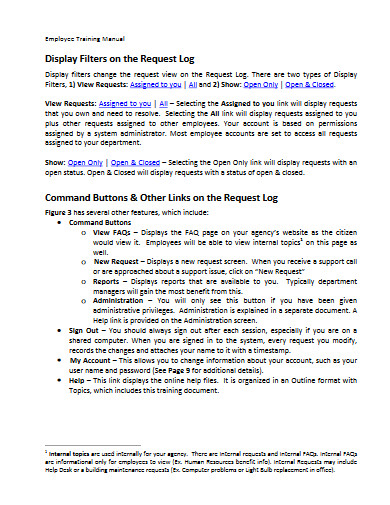12+ Training Manual Examples to Download
Having a consistent and systematic way of doing daily procedures and fulfilling business goals is vital for a company’s success. The constant movement in the organization and the steady stream of people coming in and out of its doors stresses the need to have an efficient way of training individuals and informing them of the policies. This is why training manuals such as employee work rules remain to be an essential tool to answer these needs. This documents and compiles a bulk of instruction on a specific process or rules. This way, it’s easier to discuss and take them out for a quick review or reference on certain topics and regulations. Learn more about this in the article below.
12+ Training Manual Examples
1. Restaurant Manager Training Manual Template
2. Bartender Training Manual Template
3. Restaurant Customer Service Training Manual Template
4. Training Manual Table Of Contents Template
5. Training Instruction Manual Template
6. Supervisors Training Manual Template
7. Agent Training Manual
8. Health Training Manual
9. E-Billing Training Manual
10. Child to Child Training Manual
11. Training Development Manual
12. Marketing Training Manual
13. Employee Training Manual
What Is a Training Manual?
In general, a training manual is recognized as a handbook of instructions. In a more profound sense, a training manual’s purpose is to ensure that individuals accurately perform their assigned tasks and that users are able to understand how a product works. This is a standard document or material used in every organization and company because order and compliance are crucial in any group. Without a proper means of discussing and presenting a business’s procedures to new recruits or a group’s rules for review, it could be challenging to commence daily operations.
Significance of Training Manuals
Independence and quality performance are only possible when everyone knows their role or scope of work in the organization. Grappling the basic duties in a completely new environment often puts people in a state of confusion and anxiety, affecting their potential. This is why training manuals are a great introduction to ease anyone into an unfamiliar space.
According to Bizfluent, training manuals are important because it contributes to an organization’s quality management as this helps them provide consistent process instructions and directory for every personnel. This is also an effective way to document past best practices and apply it in the current operational scene of the business. This means that as years and years of good services and efficient procedures get filed up in the manual, the future should expect a much more excellent quality of processes and transactions, elevating the business’s performance.
How to Create a Training Manual
If you need a set of guidelines and tips to help you make a training manual, refer to the list below:
1. Establish Your Objectives
When writing your training manual, be sure to establish your objectives first. This gives you a sense of awareness and an overall guide of what the entire manual is all about. This will be what your manual users will understand from your content. This also helps you customize your manual to achieve your goal. A training manual can serve various purposes such as a training handbook for new employees, a review of safety policies, a demonstration of emergency plans, an orientation program of newly implemented regulations, or steps in dealing with customer service. Essentially, establishing your goals gives you the entire idea of the kind of training manual you’re going to research on and write.
2. Consider Your Audience
Aside from determining your main objective for writing the manual, never forget to include your audience into the equation. Understanding your audience’s position, background, and demographic helps you present your content in a way that appeals to their interest and understanding. For example, if you’re presenting a set of rules and regulations to new hires, you won’t expect them to have a background of your company policies. Which is why you need to explain and include everything they need to know. Taking your audience into consideration allows you to make a guide that doesn’t only suit them but also helps you achieve your goals.
3. Create an Outline for Your Material
The training materials help you discuss the points of your manual to your audience. This provides the instructions that they will need to remember so they’ll be able to comply with the rules and perform the tasks promptly and correctly. This can be lengthy and challenging to organize. To reduce the confusion, make a training manual outline. Gather information and identify the main parts or chapters on your manual.
Then, determine the corresponding tasks for it with their guideline or procedures. If it deals with hardware and machines, you can demonstrate them using illustrations. Gather all of this on a rough layout to ensure that you’ll miss nothing out.
4. Provide a Section Summary
The summary helps improve retention. With exceptions to the tiniest percent of the population who have a photographic memory, it could be hard to remember some points on the manual. Help them review by providing a section summary containing all the essential points in a single part. Instead of looking up important details amidst the sea of information, they’ll save time by directly referring to the summary list after each section. This makes the material useful not just for long discussions but also for a quick check.
FAQs
What are the different components of a training manual?
According to TrainYoucan, here are some important components of a training manual:
- Introduction
- Objectives
- Summary
- Graphics
- Worksheets
- Conclusion
- Bibliography
Do companies need to have a training manual?
No, companies don’t have a legal obligation to provide a training manual.
Is there a specific length to train a new employee?
No, but according to Betterteam, it takes new employees one to two weeks before they become productive.
A training manual is important in ensuring that everyone in the organization understands the process, performs standard procedures, and fulfills the goals of the operations efficiently. This is also a way to impose regulations and establish law and order within the workplace. If you’re having hard time establishing your training get yours from our collection and download now!


